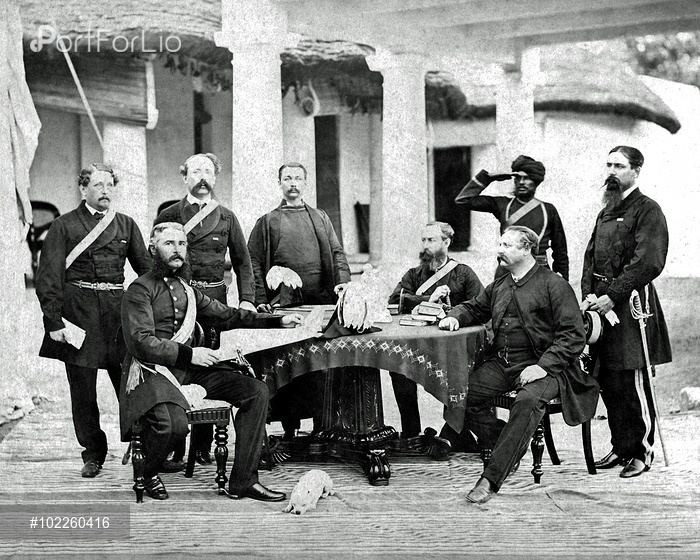Name Henry Tombs | Years of service 1841 - 1872 Rank Major general Role Armed force officer | |
 | ||
Battles/wars Siege of DelhiFirst Anglo-Sikh WarSecond Anglo-Sikh WarBhutan WarIndian MutinyGwalior CampaignBattle of PunniarBattle of MoodkeeBattle of AliwalBattle of RamnagarBattle of ChillianwallahBattle of GoojeratBattle of BudleekeseraBattle of Nujjufghur Similar People Lal Singh, Hugh Gough - 1st Viscount, Sir Harry Smith - 1st Baronet, James Collis, Patrick Mullane | ||
Major General Sir Henry Tombs VC KCB (10 November 1825 – 2 August 1874) was a recipient of the Victoria Cross, the highest and most prestigious award for gallantry in the face of the enemy that can be awarded to British and Commonwealth forces.
Contents

Early life
Henry Tombs was born in Calcutta, India on 10 November 1825. He was the youngest of seven to Major General John Tombs and Mary Remington. He was sent back to England for an education during which time he studied at Abingdon School. At the age of 14 he entered the East India Company's Seminary at Addiscombe, graduating in June 1841 and receiving a commission in the Bengal Horse Artillery. In 1869 he married Georgina Janet Stirling, the youngest daughter of Admiral Sir James Stirling. Their grandson Joseph Tombs received the VC for actions during World War I.
Military career
Tombs received his commission as second lieutenant in the Bengal Horse Artillery on 11 June 1841, and first saw active service aged 18 during the Gwalior Campaign. He distinguished himself while fighting at the Battle of Punniar with the No.16 Light Field Battery (horsedrawn), and was awarded the Bronze Star in 1843.
During the First Anglo-Sikh War (1845–1846), he became Aide-de-Camp to Lieutenant General Sir Harry Smith. He was present at the Battle of Moodkee, the Battle of Ferozeshah and the Battle of Aliwal. He was awarded a Sutlej Medal with two clasps (for Ferozeshuhur and Aliwal) in 1848.
During the Second Anglo-Sikh War (1848–1849), he was promoted to Deputy Assistant Quartermaster General of Artillery. He was present at Battle of Ramnagar, the Battle of Chillianwallah and the Battle of Goojerat. He received the Punjab Medal with two clasps (for Chillianwallah and Goojerat) and was subsequently promoted Major.
Tombs saw service for a fourth time during the Indian Rebellion of 1857, during which he commanded a troop of Horse Artillery. On 31 May 1857 his horse was shot from beneath him for the first time. He fought at the Battle of Badli-ki-Serai, where two horses were shot from under him. He was also present at the Siege of Delhi, during which he commanded the Bengal Horse Artillery contingent. It was during this siege, on 9 July 1857 that he performed the act of gallantry for which he was to be awarded the Victoria Cross. As a result of his and his troops' gallantry the unit was awarded the title of Tombs's Troop, which – as 28/143 Battery (Tombs's Troop), part of 19th Regiment Royal Artillery – it still carries to this day.
Victoria Cross
At the age of thirty-one, when a major in the Bengal Horse Artillery, Bengal Army during the Indian Mutiny, the following deed took place at the Siege of Delhi for which he and James Hills were awarded the VC:
Lieutenant-Colonel Henry Tombs, C.B., and Lieutenant James Hills
Date of Act of Bravery, 9th July, 1857
For very gallant conduct on the part of Lieutenant Hills before Delhi, in defending the position assigned to him in case of alarm, and for noble behaviour on the part of Lieutenant-Colonel Tombs in twice coming to his subaltern's rescue, and on each occasion killing his man.
(See despatch of Lieutenant-Colonel Mackenzie, Commanding 1st Brigade Horse Artillery, dated Camp, near Delhi, 10th July, 1857, published in the Supplement to the London Gazette of the 16th January, 1858.)
The medal
His Victoria Cross is displayed at the Royal Artillery Museum, Woolwich, London.
